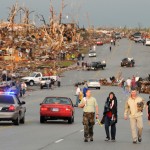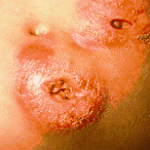You may have read about the outbreak of a rare fungal infection called zygomycosis that occurred after the tornado in Joplin, MO last month. This fungal infection can cause death in almost half the people who are infected with it.

- The Tornado was just the start of the problems
Most deaths from tornadoes are caused by debris impaled into people as a result of the high-speed winds. In this case the fungal infection also came from flying debris. The tornado winds whipped debris-containing soil causing it to embed into the some people’s skin. These fungi are commonly found in soil and do not typically cause infection.
The patients from Joplin presented with skin infections from the flying debris and were treated with antibiotics. The infections didn’t heal and when they were examined under a microscope, the fungus was seen.

On June 14, the Centers for Disease Control and Prevention (CDC) sent a team of researchers to Joplin to investigate the infections. As of June 19, the CDC had confirmed 15 cases of zygomycosis and four deaths have been attributed to the infection.
The overall incidence of this kind of fungus, zygomycosis, infection in the United States is very low. Most larger hospitals may see no more than one or two cases each year, generally in high risk patients who inhale the fungal spores (patients at risk are those who are on high dose steroids, have had transplants, have HIV, or take strong medicines for arthritis).

- A rare infection from a common fungus
Outbreaks of zygomycosis fungal infections after natural disasters have happened before. After the 2004 tsunami in Southeast Asia, several cases of skin infections with zygomycosis infections were reported (Lancet 2005;365:876-878, Emerg Infect Dis 2005;11:1591-1593).
